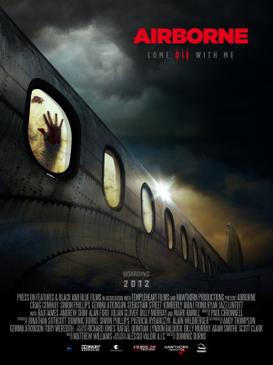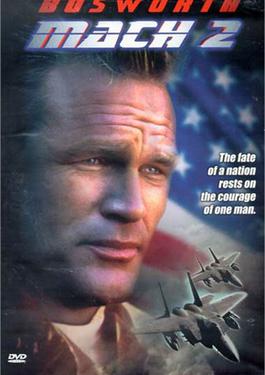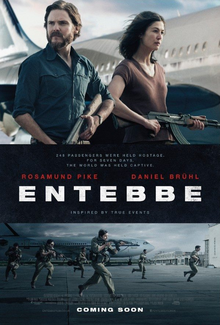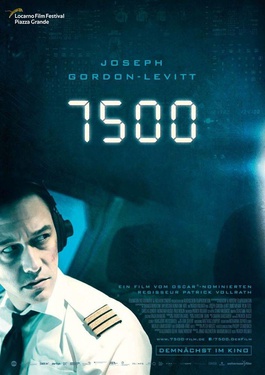
Aircraft hijacking is the unlawful seizure of an aircraft by an individual or a group. Dating from the earliest of hijackings, most cases involve the pilot being forced to fly according to the hijacker's demands. There have also been incidents where the hijackers have overpowered the flight crew, made unauthorized entry into the cockpit and flown them into buildings – most notably in the September 11 attacks – and in some cases, planes have been hijacked by the official pilot or co-pilot, such as with Ethiopian Airlines Flight 702.

The Entebbe raid or Operation Entebbe, officially codenamed Operation Thunderbolt, was a 1976 Israeli counter-terrorist mission in Uganda. It was launched in response to the hijacking of an international civilian passenger flight operated by Air France between the cities of Tel Aviv and Paris. During a stopover in Athens, the aircraft was hijacked by two Palestinian PFLP–EO and two German RZ members, who diverted the flight to Libya and then to Uganda, where they landed at Entebbe International Airport to be joined by other terrorists. Once in Uganda, the group enjoyed support from Ugandan dictator Idi Amin.

Air Force One is the official air traffic control-designated call sign for a United States Air Force aircraft carrying the president of the United States. The term is commonly used to denote U.S. Air Force aircraft modified and used to transport the president, and as a metonym for the primary presidential aircraft, VC-25, although it can be used to refer to any Air Force aircraft the president travels on.

Indian Airlines Flight 814, commonly known as IC 814, was an Indian Airlines Airbus A300 that was hijacked on 24 December 1999 by five members of Harkat-ul-Mujahideen. The passenger flight, en route from Kathmandu to Delhi, was taken over shortly after it entered the Indian airspace at about 16:53 IST. The aircraft carried 190 occupants which included 179 passengers and 11 crew members including Captain Devi Sharan, First Officer Rajinder Kumar, and Flight Engineer Anil Kumar Jaggia.

TWA Flight 847 was a regularly scheduled Trans World Airlines flight from Cairo to San Diego with en route stops in Athens, Rome, Boston, and Los Angeles. On the morning of June 14, 1985, Flight 847 was hijacked soon after take off from Athens. The hijackers demanded the release of 700 Shia Muslims from Israeli custody and took the plane repeatedly to Beirut and Algiers. Later Western analysis considered them members of the Hezbollah group, an allegation Hezbollah rejects.

In December 1973, Fatah, a Palestinian military organization executed series of attacks originating at Rome-Fiumicino Airport in Italy which resulted in the deaths of 34 people. The attacks began with an airport-terminal invasion and hostage-taking, followed by the firebombing of a Pan Am aircraft and the hijacking of a Lufthansa flight.

The Delta Force is a 1986 American action film starring Chuck Norris and Lee Marvin as leaders of an elite group of Special Operations Forces personnel based on the real life U.S. Army Delta Force unit. Directed, co-written and co-produced by Menahem Golan, the film features Martin Balsam, Joey Bishop, Robert Vaughn, Steve James, Robert Forster, Shelley Winters and George Kennedy. It is the first installment in The Delta Force film series. Two sequels were produced, entitled Delta Force 2: The Colombian Connection and the direct-to-video Delta Force 3: The Killing Game. The Delta Force was "inspired" by the hijacking of TWA Flight 847.

Sabena Flight 571 was a scheduled passenger flight from Brussels to Tel Aviv via Vienna, operated by the Belgian national airline, Sabena. On 8 May 1972, a Boeing 707 passenger aircraft operating that service, captained by British pilot Reginald Levy, DFC, was hijacked by four members of the Black September Organization, a Palestinian terrorist group. Following their instructions, Captain Levy landed the plane at Lod Airport. The hijackers demanded that Israel release Palestinian prisoners in exchange for the hostages. The standoff was ended by an Israeli commando raid in which all of the hijackers were killed or captured.

Operation Thunderbolt, known in Israel as Mivtsa Yonatan, also called Entebbe: Operation Thunderbolt in the US, is a 1977 Israeli film directed and co-written by Menahem Golan and starring Klaus Kinski, Yehoram Gaon and Sybil Danning. The film is based on an actual event – the hijacking of a flight by terrorists and the freeing of Israeli hostages on July 4, 1976. The operation was known as at Entebbe Airport in Uganda. Operation Thunderbolt follows the events following the flight's takeoff until the hostages' return to Israel. The film was nominated for the Academy Award for Best Foreign Language Film.
"Yankee White" is the first episode in the first season of the American crime drama television series NCIS. It first aired on CBS in the United States on September 23, 2003. The episode is written by Donald P. Bellisario and Don McGill and directed by Bellisario. It was seen by 13.04 million viewers.

Singapore Airlines Flight 117 was a Singapore Airlines flight that was hijacked en route by four Pakistani terrorists on 26 March 1991.

Michel Bacos was a French airline pilot. He was the captain of Air France Flight 139 when it was hijacked on 27 June 1976 by terrorists belonging to the German Revolutionary Cells (RZ) and the Palestinian Popular Front for the Liberation of Palestine – External Operations (PFLP-EO). The hijacking was part of an international campaign of Palestinian terrorism.

Voyage of Terror: The Achille Lauro Affair is a 1990 TV miniseries based on the 1985 Achille Lauro hijacking and starring Burt Lancaster. The two part series aired on TV in 1990 and was filmed on the actual Achille Lauro cruise ship. It is the second adaption of the hijacking, after 1989's The Hijacking of the Achille Lauro.

The Achille Lauro hijacking took place on 7 October 1985, when the Italian ocean liner MS Achille Lauro was hijacked by four men representing the Palestine Liberation Front (PLF) off the coast of Egypt, as she was sailing from Alexandria to Ashdod, Israel. A 69-year-old Jewish American man in a wheelchair, Leon Klinghoffer, was murdered by the hijackers and thrown overboard. The hijacking sparked the "Sigonella Crisis".

Airborne is a 2012 British horror film written by Paul Chronnell and directed by Dominic Burns, who describes it as a tongue-in-cheek film in the tradition of The Twilight Zone. A first trailer was released in 2011. It was reported in the media that it presents Mark Hamill's first appearance in a British film; however, Hamill had acted previously in the 1982 British film Britannia Hospital. Airborne's introduction, before sporting a voice-over by Mark Hamill, refers in writing to a so-called Firelight Protocol.

Mach 2 is a 2001 American direct-to-video action disaster thriller film directed by Fred Olen Ray.

Entebbe is a 2018 action thriller film directed by José Padilha and written by Gregory Burke. The film recounts the story of the Entebbe raid, a 1976 counter-terrorist hostage-rescue operation, and stars Rosamund Pike and Daniel Brühl.

7500 is a 2019 action-thriller film directed by Patrick Vollrath and written by Vollrath and Senad Halilbašić. It stars Joseph Gordon-Levitt as Tobias Ellis, a pilot whose plane is hijacked by Islamic terrorists. An international co-production between Austria, Germany, and the United States, filming took place in November 2017 in Cologne and Vienna. The title is in reference to Emergency Transponder Code for "unlawful interference".

The apparent success and instant notoriety of the hijacker known as D. B. Cooper in November 1971 resulted in over a dozen copycat hijackings within the next year all using a similar template to that established by Cooper. Like Cooper, the plan would be to hijack an aircraft, demand a ransom, and then parachute from that aircraft as a method of escape. To combat this wave of extortion hijackings, aircraft were fitted with eponymous "Cooper Vanes", specifically designed to prevent the aft staircase from being lowered in-flight. The Cooper Vane, as well as the widespread implementation of other safety measures such as the installation of metal detectors throughout American airports, would spell the end of the Cooper copycats.


















